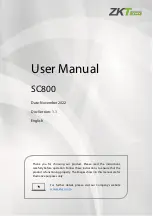
Glossary
S7-1500R/H redundant system
System Manual, 10/2018, A5E41814787-AA
317
Organization block
Organization blocks (OBs) form the interface between the operating system of the CPU and
the user program. The organization blocks determine the order in which the user program is
executed.
Pairing
Pairing is the mutual recognition of the CPUs of an S7-1500R/H system within a network.
During pairing, the CPUs exchange information for mutual identification. Example: Checking
for matching article number and firmware version. Successful pairing of two CPUs is a
fundamental requirement for redundant operation.
Parameter
●
Tag of a STEP 7 code block:
●
Tag for setting the behavior of a module (one or more per module). In as-delivered state,
every module has an appropriate basic setting, which you can change by configuring in
STEP 7. There are static and dynamic parameters
Parameters, dynamic
You can change dynamic module parameters during operation by calling an SFC in the user
program, for example, limits of an analog input module.
Parameters, static
You cannot change static module parameters with the user program, but only with
configuration in STEP 7, for example, the input delay of a digital input module.
PELV
Protective Extra Low Voltage = safety extra low voltage connected to protective earth
Pre-wiring
Wiring of the front connector in the "pre-wiring position" at the I/O module or before you
insert the front connector into the I/O module.
Primary CPU
Role of a CPU in the S7-1500R/H redundant system. If the R/H system is in the RUN-
Redundant system state, the primary CPU controls the process. The backup CPU processes
the user program synchronously and can take over process control if the primary CPU fails.
Summary of Contents for Simatic S7-1500H
Page 1: ......










































